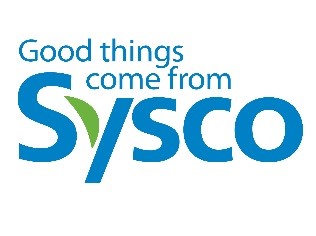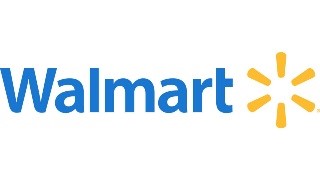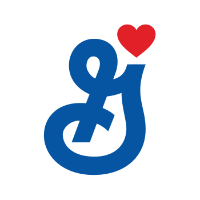An Active Debate
“If you are more likely to purchase stocks during periods when the market is rising or tend to sell out of positions during periods of market pessimism, you are probably speculating excessively. The emotional urge to trade based upon the direction of the market has nothing to do with investing or attempting to ascertain the underlying value of a common stock.” - Benjamin Graham
One of the most significant developments in the investment markets in the last 20 years has been the growth of indexed-based investing and the move to passive fund management. Passive investing has grown in popularity among investors, and the recent rise in exchange-traded funds (ETFs) has accelerated the trend. Passive investments now account for 28.5% of assets under management in the U.S. Mutual funds, which track an index, have grown six-fold over the last 17 years while the assets of ETFs have grown 130-fold.
The rapid growth of passive investing warrants greater study of its impact on financial markets, particularly in a downturn or bear market. A recurring argument against indexing is that aggregate or mass movement of funds in and out of the S&P 500, the most commonly followed index, could cause concentration risk, higher price correlation and reduced benefits of diversification. Equity indices weight the stocks they contain by market capitalization. As a result, a few larger companies (such as Alphabet, Amazon, Apple and Facebook) dominate and skew the performance of benchmarks. This weighting effect can be seen when comparing the S&P 500 Index with an equal-weighted S&P index, which removes the large capitalization bias. Year to date, the market cap weighted S&P 500 is up 11.3%, while the equal-weighted index is up 8.1% (as of 8/31/17).
In the pre-passive investing era, a sell-off would entail investors reducing their separate stock positions. Individual investors would own different portfolios of individual stocks and sell different stocks contained in their portfolios, depending on their particular investment parameters. Some stocks would sell off more than others. Conversely in a rising market, there would be uneven performers as some stocks performed better based on the preferences of individual investors.
Contrast this behavior with the new phenomenon of a market with substantial passive investment exposure. A reasonable question is: What is the effect on the value of passive investment vehicles (index funds, ETFs) if a sizable percentage of the total U.S. market moved in lockstep during a rising or falling market? Substantial buying or selling of the same stocks at the same time could exert greater upward or downward pressure on prices, exacerbating highs and lows.
Active management is not exclusively about finding opportunities that translate into outperformance; it is also about managing the downside risk during periods of higher market volatility.
Furthermore, passive investment vehicles, such as index funds, do not consider valuation when buying or selling. With a large number of investment decisions on autopilot, more and more money will be invested with funds whose value is largely independent of factors that have traditionally guided investors, such as profitability, efficiency, competitive threats, management performance, growth potential and broader economic conditions. Passive investment products do not distinguish between the good and the bad. They invest in all of the stocks comprising the index, irrespective of any views about value or quality.
This “price taking” has led to some distortions in the market. Recent studies estimate that over the same period that passive investments have grown significantly, average stock correlations – the propensity for share prices to move together – grew from an average of 24% to 42%. John Bogle, the creator of the first index fund and founder of The Vanguard Group, has expressed concerns over ETFs that allow for intraday trading. He recently opined, “ETFs impact on stock trading has reached mammoth proportions. They account for nearly one half of all trading in U.S. stocks. As a result, the annualized turnover rates are different in magnitude: stock turnover, 120%; ETF turnover, 880%. The implications of the rapid trading – call it speculation – have yet to be fully examined.”
Active management is not exclusively about finding opportunities that translate into outperformance; it is also about managing the downside risk during periods of greater market volatility. Our approach at Delta is to focus on factors that drive shareholder returns, such as economic fundamentals, management and capital stewardship and a company’s intrinsic value relative to market price. Our long-term view coupled with making buy and sell decisions based on fundamentals and economic value allow us the opportunity to capitalize on market price discrepancies, even those caused by passive flows.
September 19, 2017
Company Comments
Comments follow regarding common stocks of interest to clients with stock portfolios managed by Delta Asset Management. This commentary is not a recommendation to purchase or sell but a summary of Delta’s review during the quarter.![]()
Enbridge Inc. - ENB
Enbridge, a Canadian company, is North America’s largest energy infrastructure company with strategic pipelines transporting crude oil, natural gas and natural gas liquids. Enbridge operates the world’s largest liquids transportation system, including approximately 19,000 miles of pipelines in North America. Canada’s oil sands supply is landlocked and separated from the majority of its refining markets by long distances and relies on pipelines for transport. Western Canada production is projected to exceed pipeline capacity in the near-term, making the company’s Mainline System and its access to various North American refining markets more valuable.
Pipelines are characterized by relatively high barriers to entry, such as high capital costs, and significant regulatory oversight.
In addition to pipelines, the company operates a diverse energy portfolio as a distributor and operator of alternative energy. Enbridge owns and operates Canada’s largest natural gas distribution company and provides distribution services in Ontario, Quebec, New Brunswick and New York state. Enbridge is Canada’s second largest wind and solar power generator. Beginning with its first investment in a wind farm in 2002, Enbridge committed $5.4 billion toward wind, solar, geothermal, power transmission and a host of other emerging technology projects. The segment accounts for a small but growing contribution to the company’s consolidated earnings. The diversified generation portfolio largely focuses on wind (91% of current net generating capacity) but also encompasses other renewable sources.
Pipelines are characterized by relatively high barriers to entry, such as elevated capital costs, and significant regulatory oversight. Additional pipeline capacity is restrained by burdensome regulatory reviews, elusive right of way easements, lengthy development cycles and significant funding requirements. Regulatory approvals are granted typically only when an economic need for pipelines is demonstrated.
Generally firms will not pursue expansion opportunities without securing contracted capacity. The company is insulated from direct commodity price exposure as about 95% of cash flow is underpinned by long-term, fee-based contracts. However, the cyclical supply and demand nature of commodities and related pricing can have an indirect impact on the business as shippers may continue to accelerate or delay certain projects.
In February 2017, Enbridge completed its merger with Spectra Energy Corp. The transaction was valued at $37 billion (Canadian) dollars. The merger made Enbridge the largest North American energy infrastructure company. The Spectra acquisition included a high quality backlog of pipeline and midstream projects that support the company’s guidance for 10% to 12% dividend growth in the intermediate term.
Pipelines are subject to economic regulation risk by which regulators and other government entities may change or reject proposed or existing projects, including permits and approvals for new projects. Enbridge’s long-term thesis hinges on the ability to secure additional growth projects that drive earnings and dividend growth.
With Enbridge positioned to benefit from growing oil sands supply with its Mainline System and regional pipelines, the company is capable of generating significant free cash flow, allowing it to grow its dividends and fund its crude pipeline expansions. Based on these assumptions, our valuation model indicates a long-term average annual return of 8.4%.
Sysco Corporation - SYY
Founded in 1969, Houston-based Sysco is the largest food service marketing and distribution company in North America. Sysco’s major customers include independent restaurants as well as schools, colleges, hotels, hospitals and other food service outlets. The company distributes more than 400,000 products, including approximately 40,000 Sysco-branded items. Sysco holds about an 18% market share (two times its largest competitor) of the $250 billion plus food service market in the U.S. and Canada.
Sysco’s distribution network and scale is a competitive advantage in an industry with high fixed costs, helping the company to generate industry-leading return on invested capital.
Sysco targets full service, independent restaurant operators, and the company has nearly a 30% market share among this group. Sysco focuses on independent restaurants where it has a relatively high degree of pricing power versus chain restaurants. Historically, Sysco has been able to pass along inflation adjustments without significant delays. Key drivers in the industry include prompt and accurate delivery of orders, competitive pricing, close contact with customers and the ability to provide a full array of products and services to assist clients in their food service operations. Sysco’s distribution network and scale is a competitive advantage in an industry with high fixed costs, helping the company to generate industry-leading return on invested capital.
Sysco has the largest marketing and sales organization within the food service industry, which is a key differentiator. The company advises clients on how they can drive sales and minimize costs. Sysco specializes in assessing business operations and providing its customers with a range of ancillary services, such as menu planning advice, food safety training, inventory control, product usage and labor scheduling reports. These services establish a level of trust and dependence and give Sysco valuable information relating to extensions of customer credit and accounts receivable management.
Sysco has heavily penetrated the mature U.S. restaurant industry. The company’s revenue growth will be driven by acquisitions. Sysco’s size and free cash flow will allow it to continue to be a consolidator in a fragmented industry. Acquisitions will primarily focus on product extensions in the U.S. as well as geographic expansion, positioning Sysco to sell additional products to new and existing customers. Sysco recently acquired the Brakes Group, a large European foodservice distributor with the No. 1 market share in the U.K.
Growing largely through acquisitions, Sysco has retained a decentralized, entrepreneurial culture that gives wide autonomy to the individual distribution centers. In an effort to streamline operations and reduce costs, Sysco launched its Business Transformation Project. After years of set-backs and cost overruns, Sysco decided to shut down its SAP operating system consolidation effort. However, the company has continued to further consolidate procurement, streamline its distribution and order fulfillment process, increase sales productivity and improve customer service. Management expects to save $600 to $650 million annually to reinvest in revenue growth and improved profitability.
Despite its industry dominance, Sysco faces some challenges. The industry is highly fragmented and competitive. In addition to local and regional distributors, competition is growing more diverse as it includes cash-and-carry wholesalers, such as Restaurant Depot, and club stores, such as Sam’s and Costco. Over the years, customers have also gravitated toward chain restaurants and away from local, independent establishments where Sysco maintains its dominance. This trend has begun to reverse more recently. As an industry consolidator, there is always the risk that Sysco will overpay for acquisitions and be unable to profitability integrate these new companies.
We estimate that Sysco will be able to grow revenues long term at a low, single-digit rate versus an industry growth rate that is marginally positive. The company should be able to produce operating margins averaging in the mid-single digits, with those margins trending higher over time. Using these assumptions, our stock valuation model indicates Sysco’s current stock price offers a long-term annual average rate of return of approximately 7%.
Wal-Mart Stores, Inc. - WMT
Founded in 1962, Walmart began with a single store in Rodgers, AR. Today it has grown to more than 11,500 retail stores in 28 countries serving more than 260 million customers a week. The company is the world’s largest retailer operating in a variety of formats, including discount stores, neighborhood markets, super centers and grocery stores as well as e-commerce websites in 11 countries. Walmart, with $485 billion in annual sales, possesses tremendous scale and leverage to extract the most favorable terms possible from suppliers and vendors. The company is very adept at using its cost advantage to maintain low price leadership and keep constant pressure on competitors.
With the recent acquisition of Jet.com, Walmart is now the No. 2 online retailer behind Amazon.
Competitive advantages in retail are hard to come by. Walmart is increasingly caught in the middle between dollar stores and more expensive department stores. The industry is no longer fragmented for easy share gains, particularly within the domestic market. Amazon has changed the distribution channel in general merchandise with a direct-to-consumer model. Another competitor, Costco, derives nearly all of its profits from membership fees so it sells food at essentially break-even. In addition to online and warehouse/retail competitors, dollar stores with improved product offerings and discount grocers are blanketing regions with stores.
In response to the expanding competitive challenges, Walmart is in the midst of an aggressive investment program. Walmart has invested nearly $3 billion for increased training and higher pay for store employees. This should reduce turnover and allow greater staffing within departments to improve customer service. The company has redesigned stores with a standard of CFF (Clean, Fast & Friendly) as well as instituted its check-out promise initiative ensuring more registers are open during peak hours. Store managers are using new technology with better data to speed inventory replenishment and to decide which products stay on shelves and where to remove clutter. Cleaner stores, better and friendlier service, and faster check-out times have led to better customer traffic rates and faster same store sales growth.
Though Walmart e-commerce is small, it is growing rapidly and its success is crucial to the company’s future. Walmart is investing heavily in its omni-channel strategy to serve customers however they prefer to be served. With the recent acquisition of Jet.com, the company is now the No. 2 online retailer behind Amazon. Walmart now offers over 50 million items and competes on two e-commerce fronts through both Walmart.com and Jet.com, which attract different customers, carry different assortments and serve different needs. E-commerce sales should continue to grow, driven by strong sales in its Site-to-Store and order online, same-day pick-up offerings. Walmart now offers free two-day shipping on minimum purchases of $35 with no annual membership fee. In addition, curbside grocery pick-up has expanded to over 1,000 store locations. With an estimated 90% of the U.S. population located within 10 miles of a Walmart, its store footprint will play a vital role in its e-commerce sales and distribution strategy.
International will continue to be an opportunity for growth. The company’s strategy is centered on increasing penetration in its existing markets and entering new, emerging markets. Walmart executes this strategy by acquiring local retail chains and then improving operating efficiency to reduce pricing and drive sales volumes. The company is narrowing its focus internationally to ensure proper investment in businesses and strategies that are core to the company. Operating internationally can be more challenging than domestically as the company adjusts to different cultures, laws and varying degrees of economic development. However, we believe strategic international expansion remains a viable growth alternative for Walmart.
Overall, we believe Walmart will be able to grow sales in the low, single-digits driven by strong e-commerce growth and international expansion. We expect Walmart’s improved U.S. distribution and better inventory management to generate average cash flow margins of 6.5%. Based on these and other assumptions, our stock valuation model indicates Walmart’s current stock price offers a long-term average annual rate of return in excess of 9.5%.
General Mills, Inc. - GIS
General Mills is a leading consumer foods company with a large stable of branded products, including breakfast cereal, refrigerated dough, baking mixes, snack foods, ice cream and yogurt. The company’s portfolio of leading brands includes Cheerios, Fiber One, Haagen-Dazs, Nature Valley, Pillsbury and Yoplait.
The company’s competitive strength is derived from its market-leading brands, economies of scale and expansive distribution network. General Mills controls the No. 1 or No. 2 market share position in almost every product category in which it competes – that is, it has a 30% share in U.S. ready-to-eat cereal, 70% in refrigerated baked goods and 40% in grain snacks. The company has developed its leading market share positions by continuously investing to improve established brands and creating new products. The management team focuses on growing new products and building brand equity through heavy consumer-focused marketing strategies.
General Mills generates approximately 70% of its revenue and profits in the mature U.S. market. Though growth should be moderate, the company’s renewed focus on product innovation and brand support through heavy advertising should help defend its market position. This leadership position and breadth of products affords a good bargaining position with retailers as these retailers depend on Mills’ brands in many categories to bring shoppers into its stores. In addition, the company is expanding internationally in both developed regions, such as Europe, and faster-growing markets, including China and Latin America. General Mills has good revenue and earnings growth potential in these regions as the company further develops its distribution network and expands its product offerings.
General Mills has developed its leading market share positions by continuously investing to improve established brands and creating new products.
General Mills has a culture of operating efficiency. The company takes a holistic, company-wide approach to improving productivity and reducing costs throughout its entire supply chain. These continuous cost saving measures allow the company to invest in its brands for future growth and maintain industry leading profitability and free cash flow.
The company, as well as the entire packaged foods industry, faces difficult challenges, including retail customer consolidation and strong competition in the industry. Retail consolidation has given General Mills’ customers greater control over product pricing and store shelf space. In addition to branded competitors, the company faces increased pressure from private label products and natural, organic products. Discounting and promotional activity remains high. Fierce competition among branded competitors, changing consumer tastes for fresh, all natural offerings at the mid- to high-end of the market and greater acceptance of store brands by cost conscious consumers has become a multi-year episode limiting Mills’ ability to grow profit margins.
Given General Mills’ concentration in mature markets, combined with small but increasing exposure to faster-growing international markets, we have assumed the company can grow revenue in the low-single digits annually over the next decade. At this pace of growth and given the company’s needed investments and promotional activity partially offset by intense focus on reducing costs, we believe cash flow margins can still average nearly 20% over this period. Based on these assumptions, our stock valuation model indicates General Mills’ current stock price offers a long-term average annual rate of return of approximately 6.5%.
Dated: September 29, 2017
For a PDF version of this article please click here.





